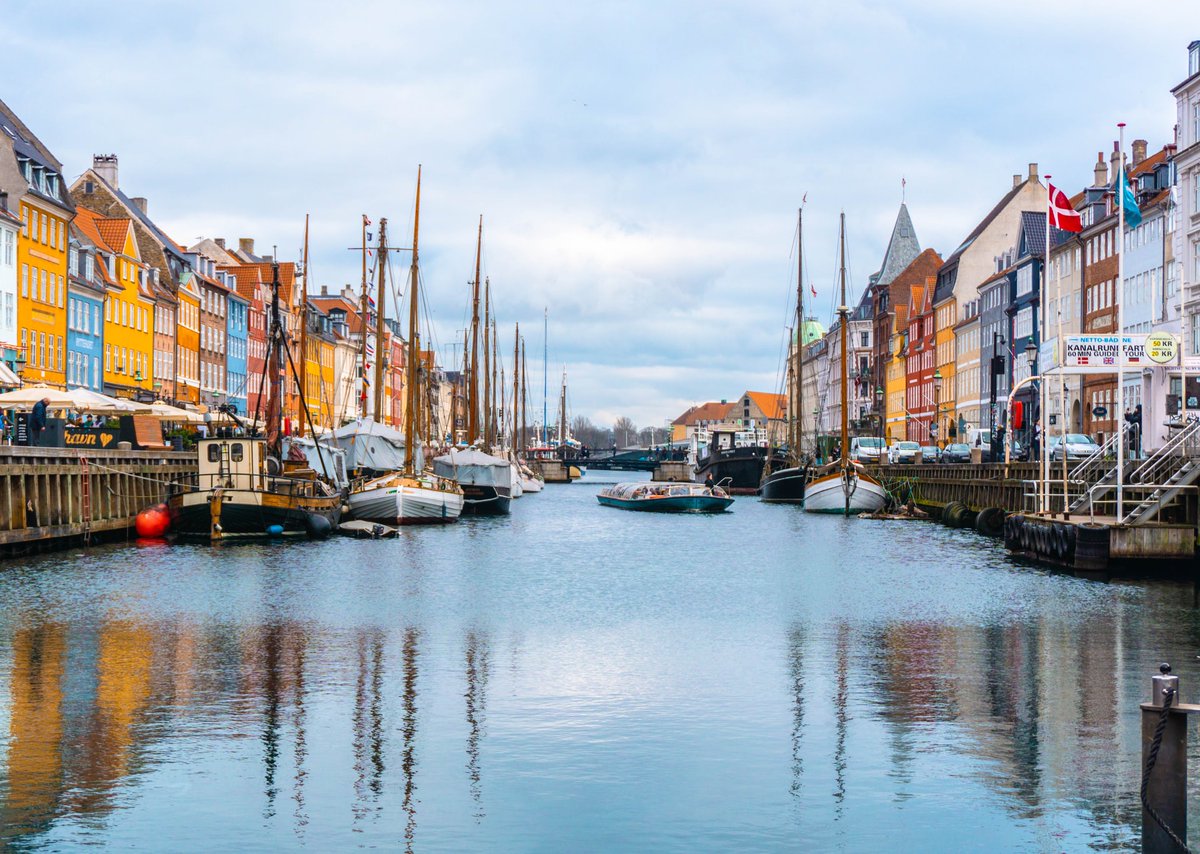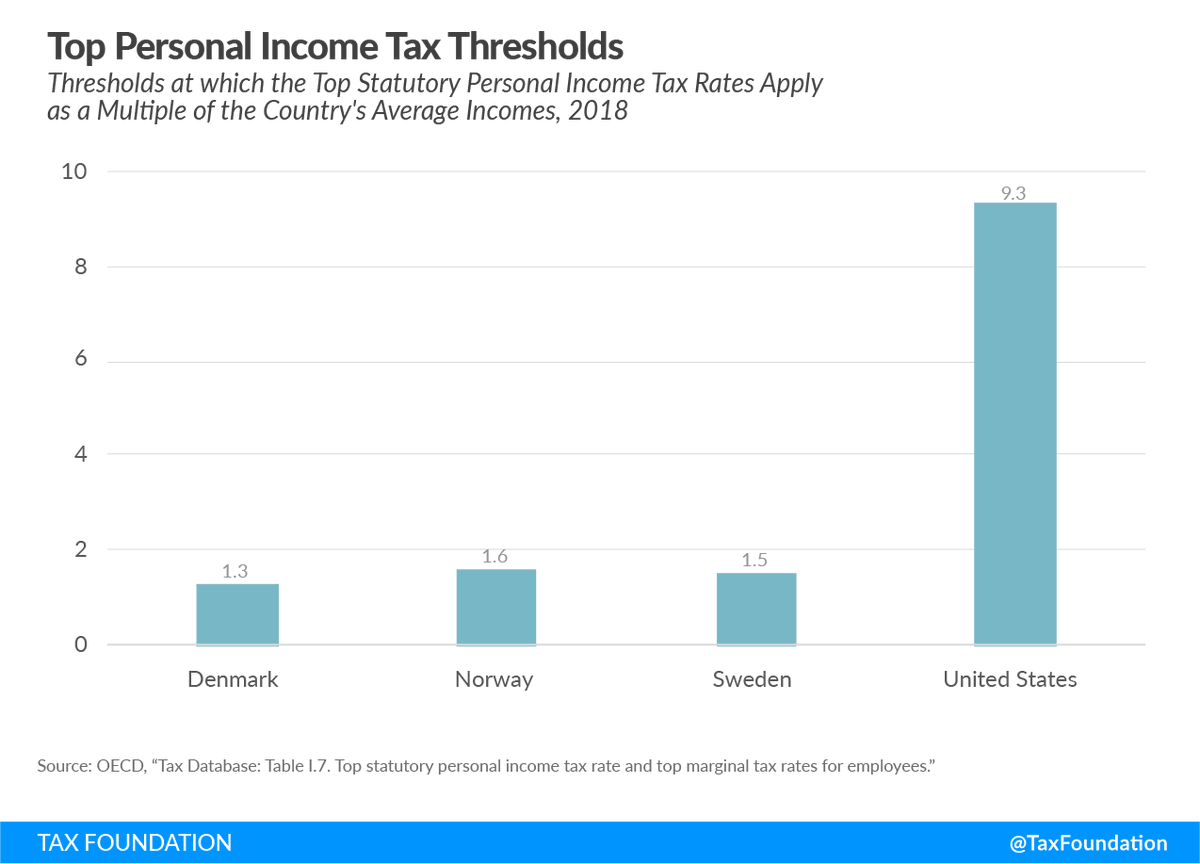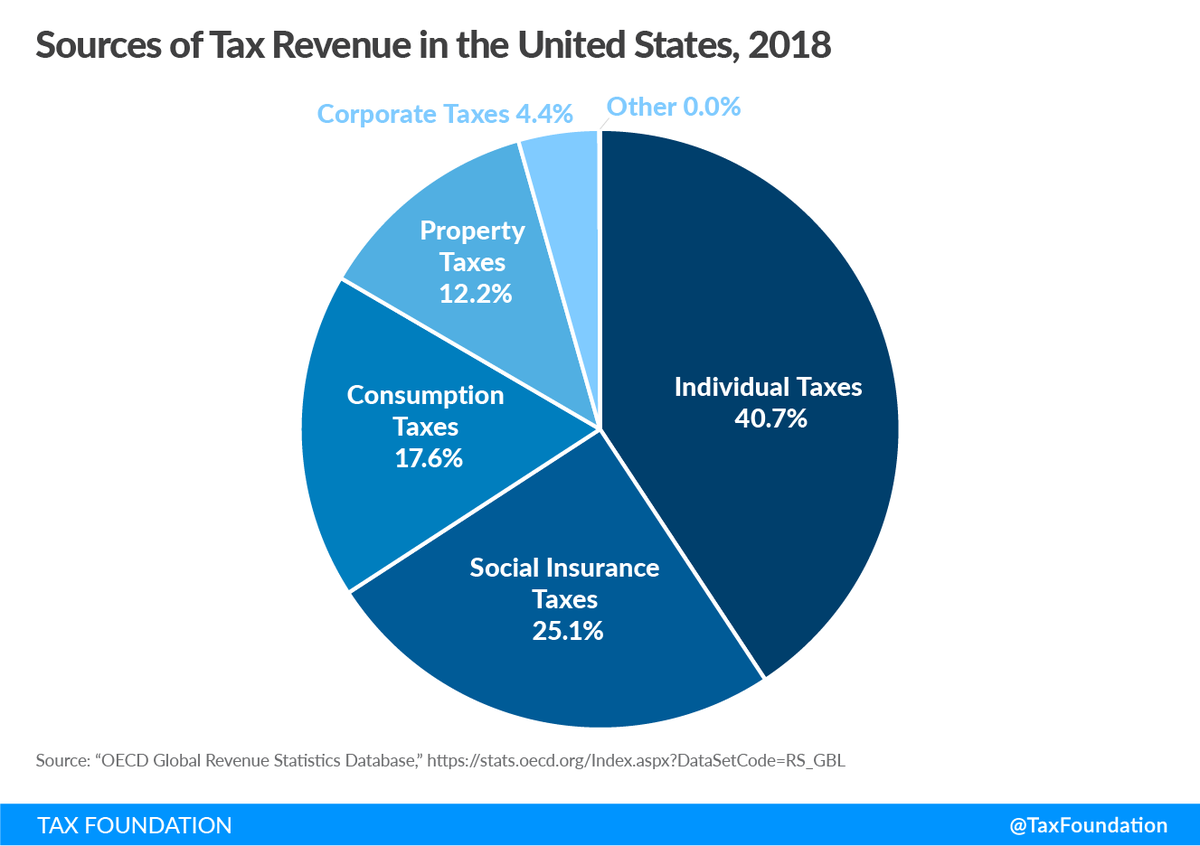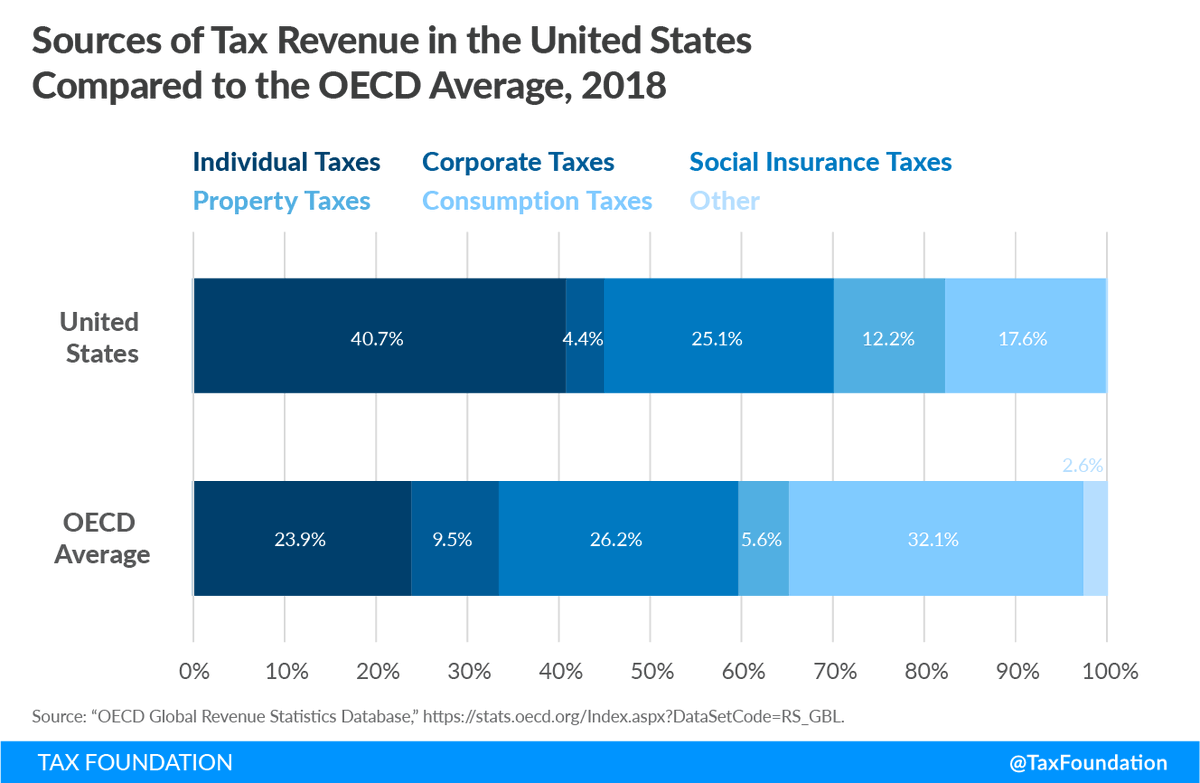Political pundits often refer to tax systems in Scandinavian countries like #Denmark and #Sweden.
But how do Scandinavian countries really pay for their government spending?
https://tax.foundation/scandinavian
THREAD">https://tax.foundation/scandinav... https://abs.twimg.com/emoji/v2/... draggable="false" alt="👇" title="Rückhand Zeigefinger nach unten" aria-label="Emoji: Rückhand Zeigefinger nach unten">
https://abs.twimg.com/emoji/v2/... draggable="false" alt="👇" title="Rückhand Zeigefinger nach unten" aria-label="Emoji: Rückhand Zeigefinger nach unten">
But how do Scandinavian countries really pay for their government spending?
https://tax.foundation/scandinavian
THREAD">https://tax.foundation/scandinav...
If the U.S. were to raise taxes in a way that mirrors Scandinavian countries, taxes—especially on the middle class—would increase through a new VAT and higher social security contributions and personal income taxes. /2
If the U.S. were to raise taxes in a way that mirrors Scandinavian countries, business and capital taxes would not necessarily need to be increased.
In fact, the corporate income tax rate would decline. /3
In fact, the corporate income tax rate would decline. /3
Business taxes are a less reliable source of revenue (unless your country is situated on top of oil).
Scandinavian countries don& #39;t place above-average tax burdens on capital income and focus taxation on labor and consumption. /4
Scandinavian countries don& #39;t place above-average tax burdens on capital income and focus taxation on labor and consumption. /4
Scandinavian countries tend to levy top personal income tax rates on (upper) middle-class earners.
Denmark, Norway and Sweden have relatively flat income tax systems. /5
Denmark, Norway and Sweden have relatively flat income tax systems. /5
If the U.S. taxed personal income in the same way that Denmark does, all income over $65,000 would be taxed at 55.9 percent. /6
It’s no surprise that taxes in Scandinavian countries are structured this way.
In order to raise a significant amount of revenue, the tax base needs to be broad:
 https://abs.twimg.com/emoji/v2/... draggable="false" alt="➡️" title="Pfeil nach rechts" aria-label="Emoji: Pfeil nach rechts"> Higher consumption taxes (VAT)
https://abs.twimg.com/emoji/v2/... draggable="false" alt="➡️" title="Pfeil nach rechts" aria-label="Emoji: Pfeil nach rechts"> Higher consumption taxes (VAT)
 https://abs.twimg.com/emoji/v2/... draggable="false" alt="➡️" title="Pfeil nach rechts" aria-label="Emoji: Pfeil nach rechts"> Higher taxes on middle-income taxpayers via social security contributions. /7
https://abs.twimg.com/emoji/v2/... draggable="false" alt="➡️" title="Pfeil nach rechts" aria-label="Emoji: Pfeil nach rechts"> Higher taxes on middle-income taxpayers via social security contributions. /7
In order to raise a significant amount of revenue, the tax base needs to be broad:
The US relies much less on consumption taxes than other OECD countries.
All OECD countries, except the US, levy value-added taxes (VAT) at relatively high rates: https://tax.foundation/2VbGkwm ">https://tax.foundation/2VbGkwm&q... /8
All OECD countries, except the US, levy value-added taxes (VAT) at relatively high rates: https://tax.foundation/2VbGkwm ">https://tax.foundation/2VbGkwm&q... /8
The US relies much less on consumption taxes than other OECD countries.
All OECD countries, except the US, levy value-added taxes (VAT) at relatively high rates: https://tax.foundation/2VbGkwm ">https://tax.foundation/2VbGkwm&q... /end
All OECD countries, except the US, levy value-added taxes (VAT) at relatively high rates: https://tax.foundation/2VbGkwm ">https://tax.foundation/2VbGkwm&q... /end

 Read on Twitter
Read on Twitter " title="Political pundits often refer to tax systems in Scandinavian countries like #Denmark and #Sweden.But how do Scandinavian countries really pay for their government spending? https://tax.foundation/scandinav... https://abs.twimg.com/emoji/v2/... draggable="false" alt="👇" title="Rückhand Zeigefinger nach unten" aria-label="Emoji: Rückhand Zeigefinger nach unten">" class="img-responsive" style="max-width:100%;"/>
" title="Political pundits often refer to tax systems in Scandinavian countries like #Denmark and #Sweden.But how do Scandinavian countries really pay for their government spending? https://tax.foundation/scandinav... https://abs.twimg.com/emoji/v2/... draggable="false" alt="👇" title="Rückhand Zeigefinger nach unten" aria-label="Emoji: Rückhand Zeigefinger nach unten">" class="img-responsive" style="max-width:100%;"/>









